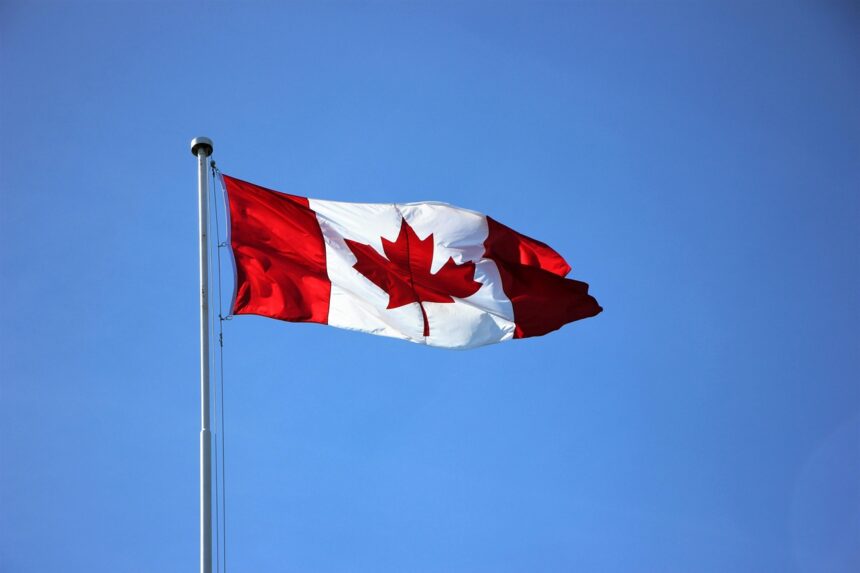Nigeria has emerged as the number one African nation with the largest number of acquired Canadian citizenship during the first half of 2025, according to the latest data from Immigration, Refugees and Citizenship Canada (IRCC).
Data from Immigration, Refugees and Citizenship Canada (IRCC) revealed that 6,831 Nigerian-born individuals acquired Canadian citizenship between January and June 2025, outpacing other African countries.
A breakdown of the data from IRCC revealed that Nigeria’s figure represents 25.9 per cent of all new citizens from the African continent.
The IRCC’s quarterly citizenship statistics reveal a total of 87,765 new Canadians welcomed in Q1 alone, with H1 projections hitting around 150,000 naturalizations overall.
“This trend reflects not just numbers, but stories of resilience and ambition,” said Colin R. Singer, Managing Partner at Immigration.ca, a leading consultancy tracking these shifts.
Singer added that Nigeria’s number is high due to factors like “Canada’s targeted recruitment of English-speaking professionals in tech, healthcare, and trades, sectors where Nigeria’s educated diaspora excels.
“Unlike Francophone-focused African peers like Cameroon, Nigeria benefits from streamlined language pathways and family reunification streams.”
Meanwhile, further review of the data from IRCC showed that a total of 26,286 Africans acquired Canadian citizenship during the period, with Nigerians making up more than a quarter of that number, the highest among all African countries.
Morocco (1,835), Algeria (1,831), and Tunisia (1,538) followed closely, each contributing more than 5 per cent of the total, underscoring Canada’s growing appeal to French-speaking migrants from North Africa.
Countries such as Eritrea (1,283), Cameroon (1,276), Ethiopia (1,163), Egypt (1,158), and the Democratic Republic of Congo (1,081) also featured prominently, reflecting the diverse mix of economic, educational, and humanitarian motivations driving African migration to Canada. South Africa had 832 new citizens, representing 3.2 per cent of the total.
Pan-Atlantic Kompass reports that the development comes amid Canada’s flexible visa-to-residency pathways, favourable post-study work options, and active recruitment of skilled workers.
However, this surge comes as the Canadian government moves to tighten its immigration policies in response to growing domestic pressure on housing shortages, strained public services, and integration challenges.
Recall that Justin Trudeau, Canada’s prime minister, is currently under scrutiny from some Canadians who view the current rate of immigration growth as unsustainable. Although Canada is recognized as one of the most welcoming countries for immigrants, there are efforts underway to slow the influx of new arrivals. This is aimed at ensuring that the country’s infrastructure and social systems can adequately support the growing population.
Canada has recently announced reforms to its immigration system, which include plans to decrease both temporary and permanent immigration levels over the next three years. This decision is said to be aimed at stabilising population growth, alleviating pressure on housing and infrastructure, and addressing issues related to system abuse.
Trudeau admitted that Canada’s population had grown at ‘baby boom speed’ in the last two years, largely driven by a surge in temporary residents, international students, and foreign workers, who were admitted after the pandemic to fill critical labour shortages.
“Our population has grown really fast, like baby boom fast,” the prime minister said, explaining that while the influx helped Canada avoid a post-pandemic recession, it also exposed loopholes that have since been exploited by “bad actors like fake colleges and big chain corporations.”
According to him, the government’s mistake was allowing temporary migration to expand unchecked while focusing primarily on permanent immigration targets. “Historically, we only planned for permanent residents, but temporary immigration, which used to be small, grew rapidly after the pandemic. We needed workers fast, and we brought them in. It was the right call at the time.”
However, he acknowledged that the sudden boom in population, fuelled by short-term work and study permits, has strained housing, healthcare, and social systems. “Looking back, when the post-pandemic boom cooled, we could have acted quicker and turned off the taps faster,” he admitted.
The new immigration plan is to pause population growth for the next two years, followed by a gradual increase from 2027 onwards. The minister said the government would now “lower the number of new immigrants coming into Canada, both temporary and permanent, while prioritising skilled permanent residents such as healthcare and construction workers.
“We’re making the system work for Canadians and for newcomers, rather than for the big box stores, chain restaurants, and sham colleges that exploit it”, he added.





